Last-Minute NYC Holiday Gift Guide 🎁
We’ve created a holiday gift guide with presents for the intrepid New Yorker that should arrive just in time—



On Friday, The New York Times published an article on New York City’s one-block streets–contending that they carry something antithetical to the city in some ways, proclaiming that bigger is not always better. But smaller can mean more expensive. While the article focuses much on the real estate nature of these wonderful enclaves, we’d thought we’d provide some historical tidbits and some of our own adds to the list.
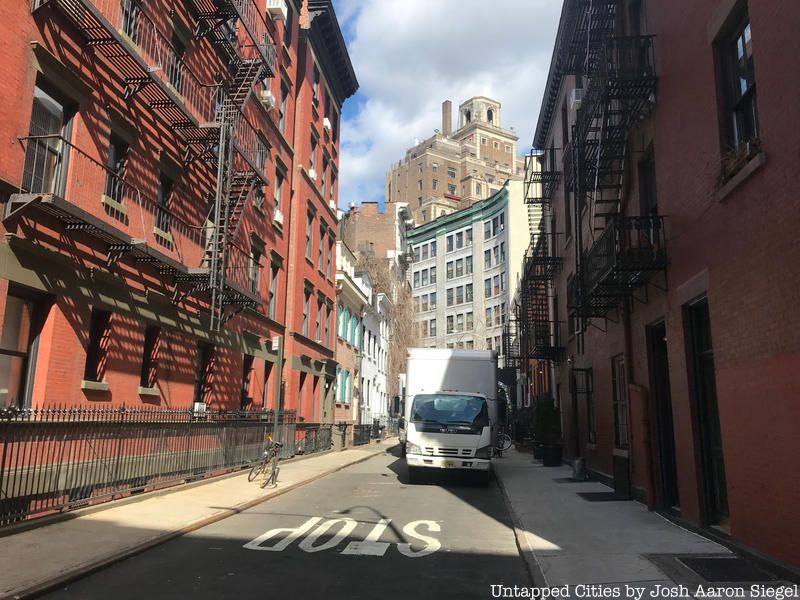
Gay Street in Greenwich Village runs from Christopher Street to Waverley Place. Named in 1833, Gay Street was created as an alley for stables (akin to MacDougal Alley or Washington Mews). It did not receive its name in relation to LGBT rights, but most likely for an owner in the area. A May 11, 1775 article indicates a resident named R. Gay had a horse for sale in the area. Gay Street became home to a number of speakeasies and artists in the early 20th century and remains one of the city’s shortest streets.
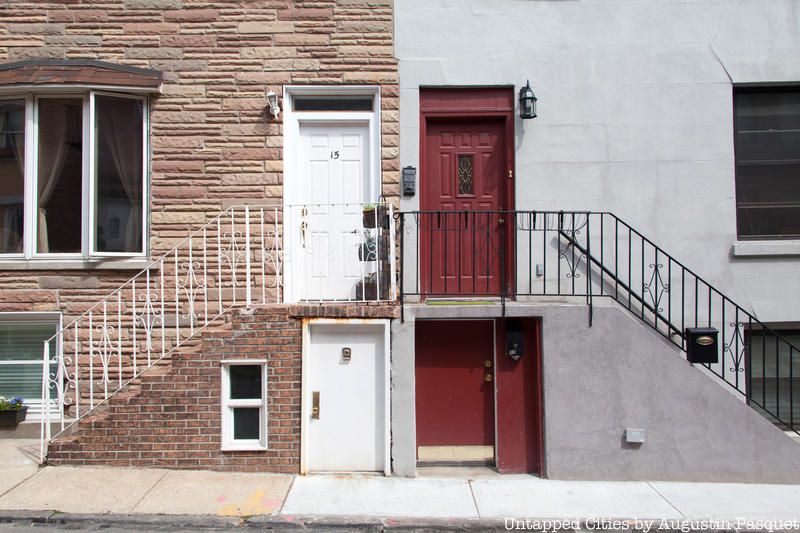
Dennett Place is a peculiar street in Carroll Gardens, running between Luquer and Nelson Street. It’s really more of an alley made up of two to three storey attached houses. Unlike other similar streets however, these houses are sometimes jokingly called “Hobbit Houses.” The ground level of each house has its own roughly four-foot tall miniature door.
Also somewhat eerily is the uniformity of these tiny doors, one per house. The community however is a tight-knit one where children play on the street and the families have occupied the places for many years. Yet it seems that despite our pesky door-related, no resident really knew why they had small basement doors.
Read more odd facts about Dennett Place here.
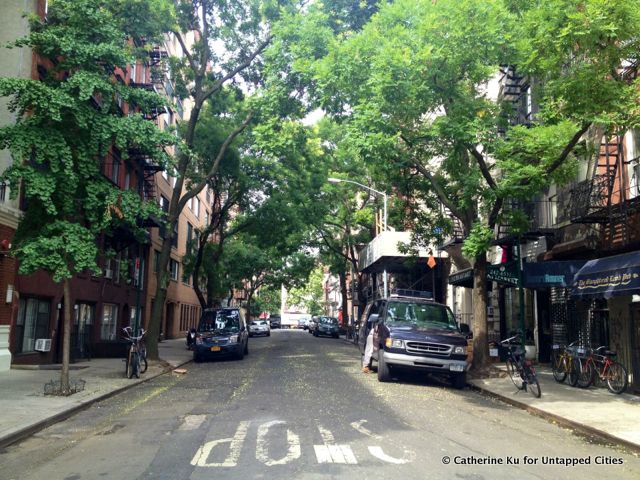
Jones Street is a single block that links Bleecker and West 4th Streets. According to lore, Jones Street was named after Dr. Gardiner Jones. the brother-in-law of Samuel Jones (for whom Great Jones Street is named after). After much debate and what must have been some tense family dinners, both men refused to budge. Eventually, Samuel Jones “relented” and humbly called his street “Great Jones.” (In an alternative to the family drama, the New York Times says Great Jones received its name because it was wider than most streets at the time). Either way, Great Jones Street is one-block longer than Jones Street but Jones Street has the claim to fame of being featured on the album cover of Bob Dylan’s Freewheelin’.
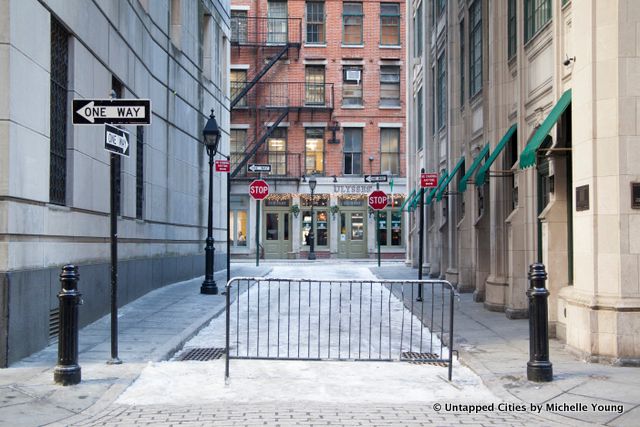 Mill Lane
Mill Lane
Mill Lane, located in the Financial District, appears to be the shortest street in Manhattan, just a few feet shorter than Edgar Street. There are no addresses on Mill Lane and the street spans from Stone Street in the east to South William Street (historically known as Mill Street) in the west. The street became Mill Lane in 1664, though it was previously called Elliot’s Alley.
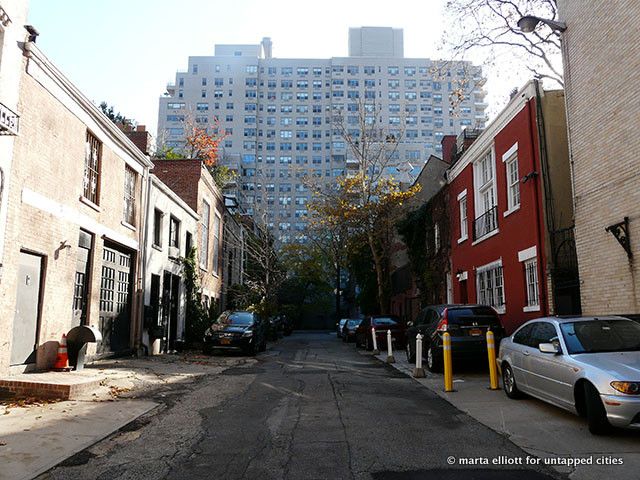 MacDougal Alley
MacDougal Alley
The street—south of West 8th Street and north of Waverly Place—harkens back to the days of great townhouses along the vast expanse of Washington Square North and Eighth Street in the latter half of the 19th century. The small street was officially established in 1883 to house stables for these townhouses, with the numbers of the corresponding townhouses still visible. From 1949 to 1950 Jackson Pollock lived at number 9 on the alley. It is very much akin to Washington Mews, and if both were to extend, they would even form the same street.
 Washington Mews, now a part of NYU
Washington Mews, now a part of NYU
This small alley, shorter than a normal street, is located in Greenwich Village and located between 5th Avenue and University Place, just south of Washington Place. The street is closed off to the public but one can easily catch the old world essence peering through the gate. The street is historically rooted in a native American–specifically Lenape–trail, a rare occurrence for a street still in existence today. In the 19th century, akin to MacDougal Alley, the street was lined with stables for the horses of those living in the grandiose townhouses in the area. Eventually the land was acquired by NYU and turned into faculty housing and other uses for the school.
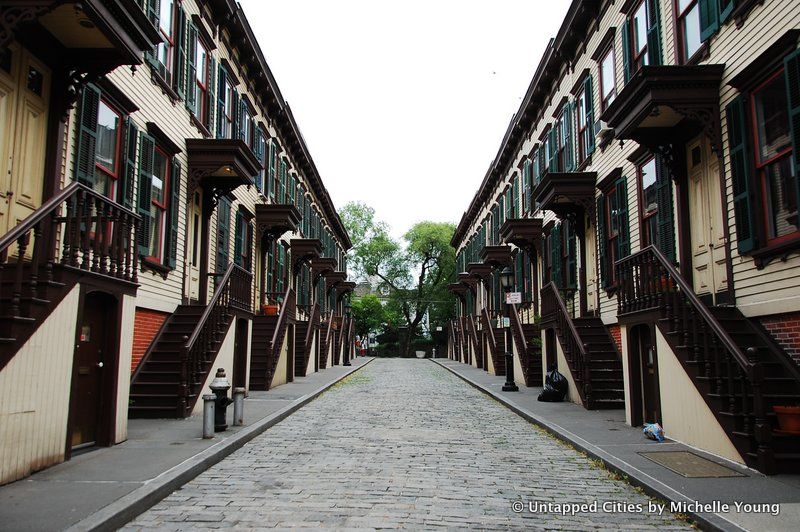
Located in Washington Heights just next to the famed Morris-Jumel Mansion, Sylvan Terrace is a small street lined with townhouses that seem to have changed little in appearance since their construction in the 19th century. They were all built at the same time by architect Gilbert Robinson Jr. in 1882 and were originally home to middle class residents. A common misconception is that they were built for servants for the mansion, but that is false. You may also recognize Sylvan Terrace for its appearance in the first season of Boardwalk Empire, used as the exterior of the apartment where Nucky Thompson moves Mrs. Schroeder (later Mrs. Thompson)
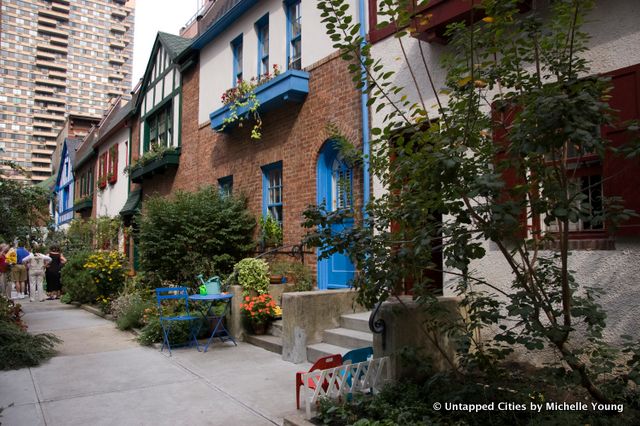
Hidden among buildings on the Upper West runs Pomander Walk, a small English-inspired street. With the entrance on 95th Street and West End (and fences to catch a sight of this old world street on both 94th and 95th streets), this street is unknown even to many locals and can only be accessed by residents who have a key to the gate. The street was built in 1921 by Irish immigrant and successful entrepreneur Thomas Healy and imagined as a “colony.” The walk was named after and inspired by the set of a popular play at the time called Pomander Walk, which featured a London street from the Georgian Period.
See more photos from Pomander Walk here.
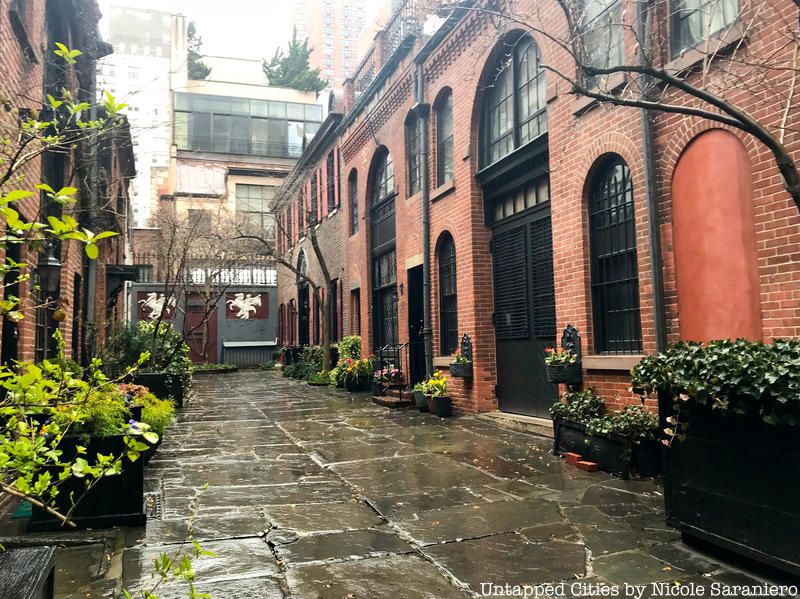
This small private alley–now a historic district–is located in Murray Hill and is a private street. Starting in 1863 and ending one year later in 1864, John Sniffen built 10 carriage houses lining the alley, that have now been coverted into apartments. It has an old world feel with two white pegasus’ gracing the back wall.
There are also numerous small historic districts around the city that are less than one block, many of which have an akin old world feel!
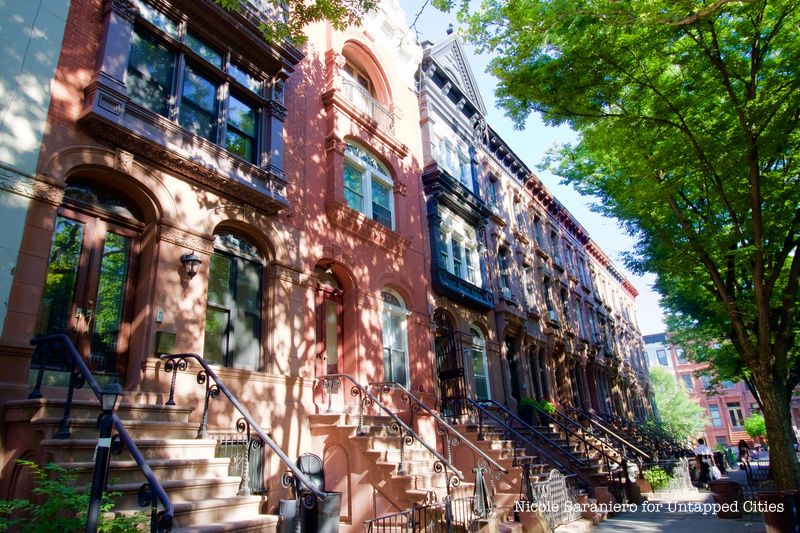
The one-block Arlington Place in Bedford Stuyvesant consists of the work of only three architects, Isaac D. Reynolds, George Chappell and Amzi Hill, lending to its picturesque charm.
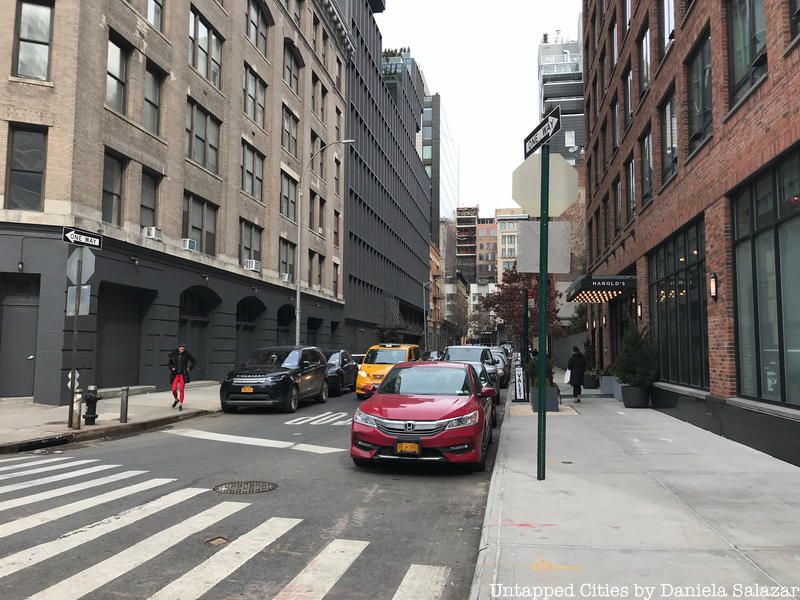
Renwick Street in Manhattan sits in the rezoned area of Hudson Square, where fancy condominiums have been sprouting. What was once a forgotten stretch between Canal and Spring Streets is now re-marketed as secluded, hidden, and secret.
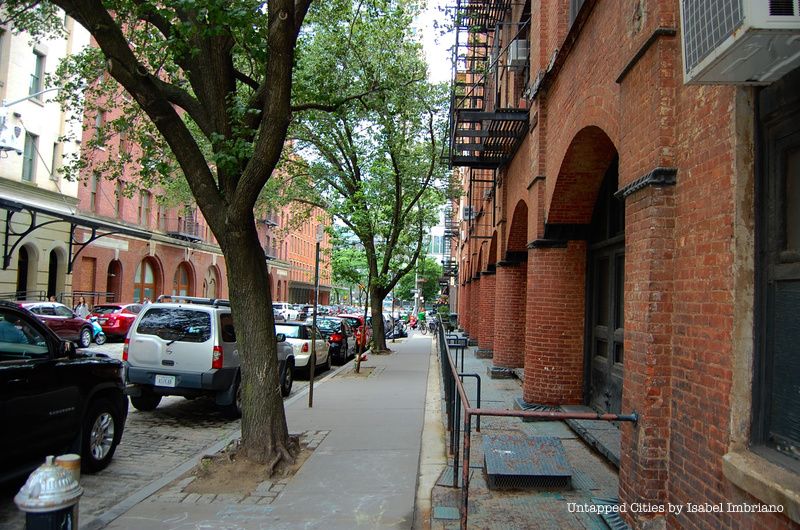
Beach Street in Tribeca is another hotspot for luxury real estate development, with the added bonus of Belgian block streets and handsome original architecture. Its name has nothing to do with waterfront however, and is thought to be a corruption of the name Paul Bache, a son-in-law of Anthony Lispenard Beach Street, created in the 18th century, was the first street either on or adjacent to Lispenard’s farm. The phrase Lispenard Swamp may sound familiar, and that’s because this area used to be swampland.
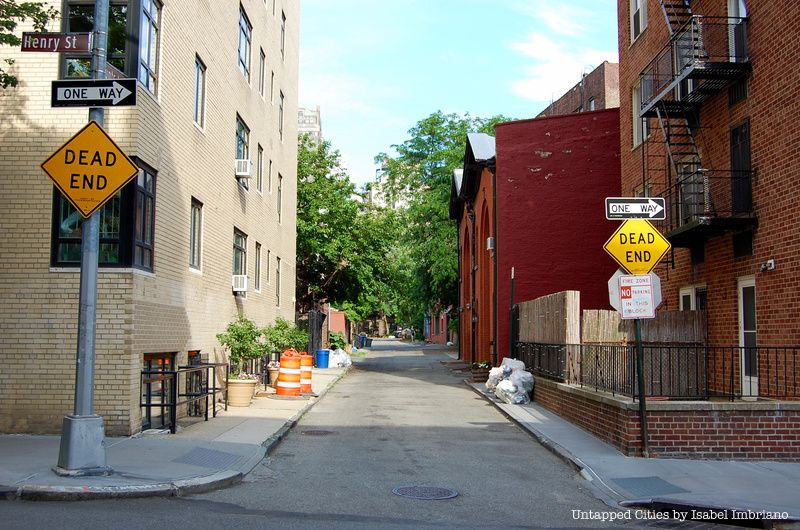
It doesn’t get too much more charming than Hunts Lane, an alley of carriage houses in Brooklyn Heights.
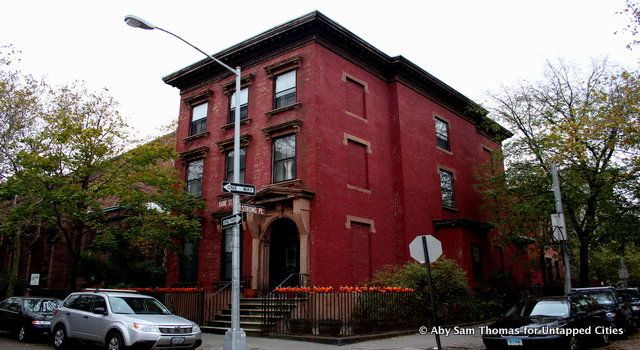
Strong Place is just a single block in Cobble Hill, but you may be familiar with it thanks to the annual Pumpkin Impalement that happens on the fence at the intersection of Strong Place and Kane Street. Sadly, the community tradition didn’t take place this year.
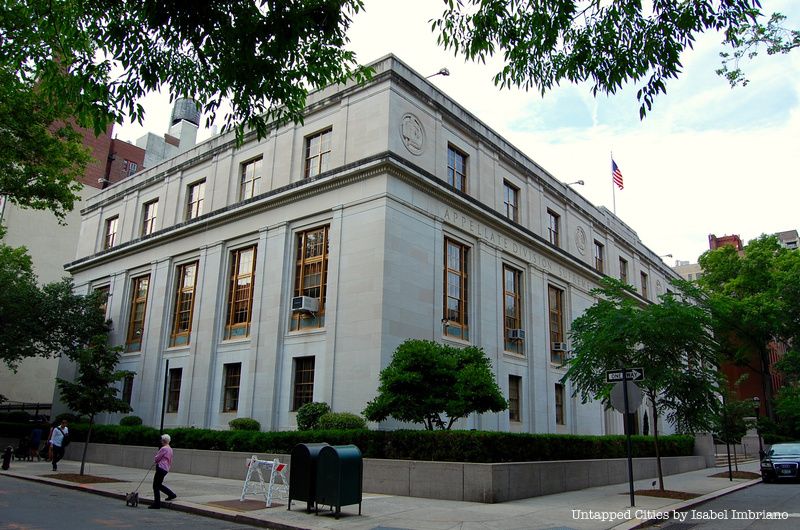
Monroe Place in Downtown Brooklyn was turned into the set of Boardwalk Empire, using the Appellate Court as a backdrop.
There are many more of NYC’s one-block streets. Submit your favorite with a photograph to info@untappedcities.com or to @untappedcities on Twitter and we’ll add it to the list! Also see the 10 Smallest Historic Districts in NYC and a Fun Map of NYC’s Shortest Streets.
This article also co-written by spencer cohen, catherine ku and nasha virata.
Subscribe to our newsletter